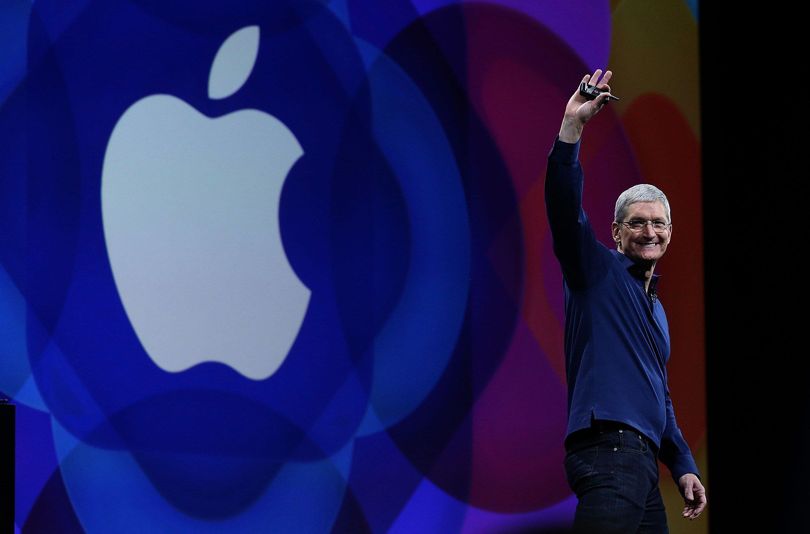
- 2 Min Read / Blog / 3.2.2020

Every year, Apple introduces all-new consumer-facing features and developer tools at its WWDC conference in San Francisco. Across its iOS, watchOS, tvOS, and macOS (the operating system formerly known as OS X) platforms, Apple modernizes the frameworks and APIs that developers use to build world-class applications. This year, iOS 10 was the standout announcement with dozens of new features and massive new opportunities for iOS developers to create incredible apps.
Starting with iOS 10, users can talk to their apps. With the introduction of SiriKit, Apple has opened up its virtual assistant to certain categories of third-party apps, allowing users to send messages or start a VoIP call in very much the same way they would through system apps. Beyond texting and calling, SiriKit supports apps for ride sharing like Uber and Lyft, reservations like OpenTable, and much more.
What’s most compelling about SiriKit is how much developers get out of the box—there’s no need to program sophisticated voice recognition. All developers need to do is teach Siri their app’s unique vocabulary—the name of the app itself, plus names for its common features. Siri is smart enough to independently understand what users mean with their request and organizes the requested feature (say, a new text message) and any other data (the recipient and the message content, for example) into what Apple calls an “intent.” The user’s request is passed along to the app as structured data, and the app is able to carry out the request and show the user custom UI within the Siri conversation.
As mobile experiences move toward more voice-oriented user experiences, SiriKit empowers iOS developers to join the conversation. As Siri inevitably moves to new and unique platforms, including the long-rumored Amazon Echo competitor, these capabilities will accelerate iOS developers’ adoption of new Siri-centric product ecosystems.
Among the biggest end-user features of iOS 10 is the redesigned lock screen and rich notification system. Borrowing from watchOS’s pill-shaped-card–based interface, the new iOS notifications offer increased interactivity and new functionality for developers to explore.
With iOS 10, third-party developers can now add new types of data to their notifications, including images, a feature once reserved for the stock Messages application. In addition, notifications that appear on the redesigned lock screen can take advantage of new interactivity, unfolding into a custom view when the user 3D Touches on their preview content. This will unlock a new degree of interactivity and possibly facilitate a new category of out-of-app experiences when the OS launches this fall.
Alongside the lock screen redesign in iOS 10 is the migration of widgets from being relegated to a secondary view within the Notification Center to prominence on the lock screen—as well as a few other places. Widgets behave in very much the same way they always have, but with a few wrinkles for their new contexts.
Widgets can display a snippet of simple data in a view that lives to the left of the new iOS 10 lock screen, and can “show more” to unfold into a more comprehensive view. Widgets can display anything from static content all the way to interactive features and HD video.
But most exciting about widgets isn’t what they can do—it’s where they can do it. Now, when users 3D Touch an app icon, they’re still presented with the regular quick actions from iOS 9 on iPhone 6s, but also with a new iOS 10 widget directly on their home screen. These can give a preview of the weather, stocks, or any other content that iOS developers prescribe—and users can add that widget to their lock screen and other views with one tap.
Widgets feel like a delivery on the promise of what 3D Touch can do, and give users greater opportunities to see rich in-app content more quickly than ever before. It remains to be seen how many third-party iOS developers will adopt widgets, but based on the widgets included with stock iOS apps, they could transform how we experience our iOS devices.
Finally, Messages is perhaps the largest new SDK introduced at WWDC, putting Apple squarely in competition with the likes of Facebook Messenger and adding endless possibilities to its built-in encrypted messaging platform. Beyond the plethora of new Apple-made features, Apple opened up its Messages platform for third-party developers to build Messages apps of their own in a new Messages App Store.
Developers can create custom extensions for their existing applications—or completely new ones—that live within a new “apps” section above the keyboard inside Messages. Apps can take a few different Apple-prescribed forms, and can even have interactivity for several members of the conversation to participate. Any app can now join in users’ iMessage conversation and allow for a new kind of group-oriented interactions, and Apple has only scratched the surface of what its Messages platform is capable of.
Stickers are perhaps the easiest foray into the Messages SDK, with a template app in Xcode that developers only need to add their own images to create an app that users can enjoy in their conversations. Messages is iOS’s most heavily used application, and now third-party iOS developers have a new outlet to participate in the core of millions of people’s mobile lives.
iOS 10 is enormous, and these SDKs only begin to describe the opportunities for developers in the upcoming release. The release represents a theme of Apple opening up increasingly prominent components of its iOS experience to iOS developers—and there’s never been a more exciting time to take advantage.